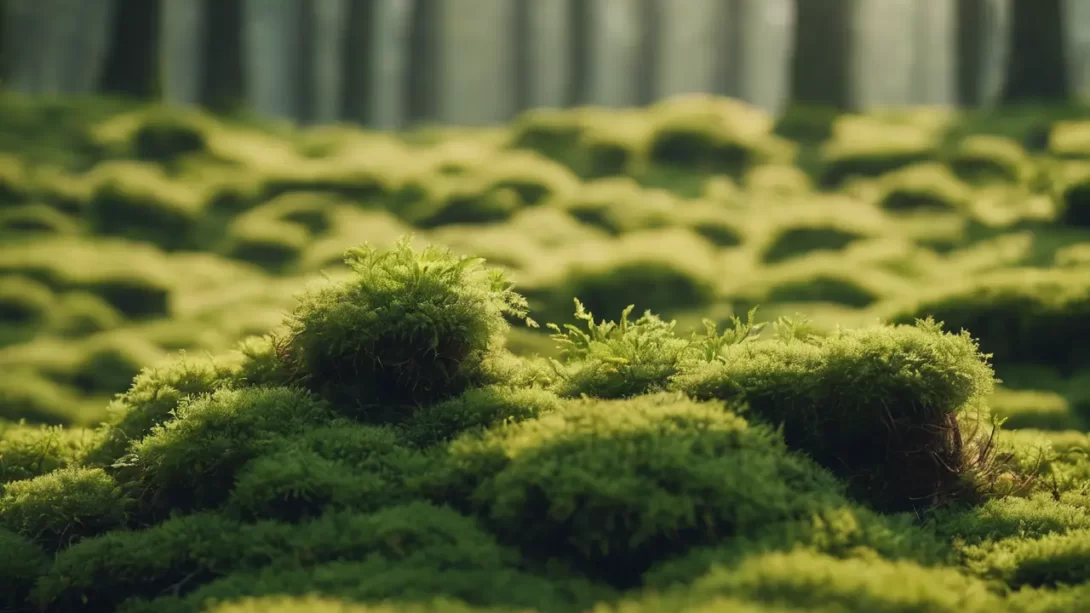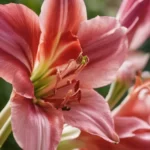Moss, a simple yet enchanting element of the garden, captivates with its lush greenery and velvety texture. This primitive plant lacks the typical roots, stems, or leaves of other green plants, thriving primarily in damp, shady environments. Gardeners are drawn to moss for its serene aesthetic and low maintenance requirements. Commonly used varieties in gardens include Bryum argenteum, Thuidium delicatulum, and Hypnum cupressiforme. Each type offers a unique charm, enhancing the beauty and diversity of garden landscapes.
- A beautiful addition to any shade loving plant arrangement
- International products have separate terms, are sold from abroad and may differ from local products, including fit, age ratings, and language of product, labeling or instructions
- Perfect for bonsai, ground cover or use in Terrariums; Shade and moisture loving, lush and soft
- Includes instructions on care for best results
Habitats Where Moss Naturally Grows
Mosses are not fussy about where they grow, but they do have preferences. You’ll often find these soft, green carpets in environments that are moist and shaded. Think of the north side of trees, damp forest floors, or even on rocks beside streams. Mosses thrive in these conditions because they absorb water and nutrients mainly through their leaves and prefer environments where competition from other plants is minimal. Understanding these habitats is crucial for both finding and successfully growing moss in your own garden.
Sourcing Moss from Nature
Before you start your moss-hunting adventure, it’s important to be aware of the legal and environmental implications. In many regions, collecting moss from public lands is restricted or even illegal. Always check local regulations and obtain necessary permits if required. When collecting moss, do so responsibly. Choose areas where moss is abundant, and never take more than a small fraction of what’s there. This ensures that the moss can regenerate and that the habitat remains undisturbed. When collecting, gently lift the moss with a trowel, ensuring to take some of the substrate it’s growing on. This helps the moss to re-establish more easily in its new location.
Garden Centers and Nurseries
For those who prefer a more straightforward approach, garden centers and nurseries are excellent sources for moss. Here, you can find a variety of mosses, often with helpful labels providing information about their care and ideal growing conditions. Staff at these establishments can offer valuable advice on which moss species will best suit your garden’s environment. Purchasing from a garden center or nursery also ensures that the moss you’re getting is sustainably sourced and free of pests and diseases, which is crucial for the health of your garden ecosystem.
- 100% natural.
- Great for tropical terrariums.
- Great for fairy gardens or outdoor ponds.
- No Dyes or Preservatives.
Online Retailers and Specialty Suppliers
In the digital age, buying moss online has become increasingly popular. Numerous online retailers and specialty suppliers offer a wide range of moss species, often with more variety than what’s available locally. When purchasing moss online, it’s important to research the supplier to ensure they are reputable and practice sustainable harvesting. Look for reviews and testimonials from other gardeners. Upon receiving your moss, inspect it for quality and health. Keep in mind that mosses shipped through the mail might appear dry and brown, but they usually revive once rehydrated and situated in a suitable environment.
Moss Cultivation and Propagation
Growing your own moss is a rewarding endeavor. Moss can be propagated through division or by using spores. To divide moss, simply break a piece off and replant it in a suitable location in your garden. This method is quick and often produces successful results. For spore propagation, collect spores from a mature moss and sprinkle them onto a suitable, moist substrate. This method takes longer and requires more patience, as it can take several weeks or months for the spores to germinate and grow. Whether you’re dividing or using spores, the key to successful moss cultivation is to provide a consistently moist and shady environment, mimicking their natural habitat. Regular misting and avoiding direct sunlight are crucial for the establishment and growth of moss in your garden.
- Feature. Sagina subulata ((syn. Sagina pilifera), is also known as the heath pearlwort, Irish-moss, awl-leaf pearlwort, or Scottish moss. It stays a vibrant green throughout the year.
- Mature size. Irish Moss is a very popular perennial herb grown in USDA Zones 4 – 8 reaching 1 to 2 inches in height, with a width of 9 to 12 inches.
- Easy to grow. Irish moss can survive in practically any growing environment. With a little bit of patience and the proper care, you can enjoy these beautiful evergreen plant for many years to come.
- Sow. Lightly press the seeds into the soil but do not cover them in Spring after your average last frost date. Kept the flat moist at all times and at 55-60°F. Germination is in 10-30 days.
- Use. Irish moss (Sagina subulata) is a low-maintenance groundcover that is perfect for use in rock gardens, between pavers, at the edges of a path, and as a low-footfall, limited-area lawn substitute.
Conclusion
Finding moss for your garden is a journey that combines exploration, learning, and a touch of adventure. Whether you choose to source moss from its natural habitat, a local garden center, online retailers, or decide to cultivate it yourself, each method offers its unique rewards. Remember, when collecting moss from the wild, it’s essential to do so responsibly and legally, preserving the delicate balance of the ecosystem. Purchasing from nurseries and online suppliers ensures sustainability and health, while cultivating your own moss can be a deeply satisfying experience that connects you more closely with the process of growing.
Incorporating moss into your garden not only adds a touch of serene beauty but also contributes to biodiversity and the creation of microhabitats. Mosses are more than just aesthetic elements; they play a vital role in the garden ecosystem, from soil formation to moisture retention. By choosing the right moss and providing the appropriate care, you can transform your garden into a lush, green sanctuary.
As you embark on your moss gardening journey, remember that patience and attentiveness to the needs of these fascinating plants are key. With the right care and environment, moss can thrive, bringing a sense of peace and natural beauty to your garden.






